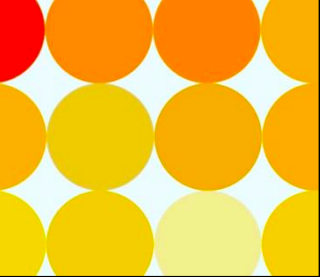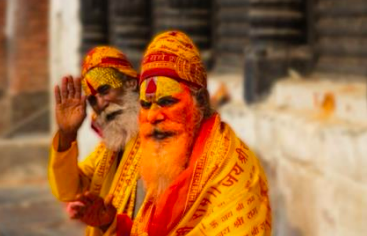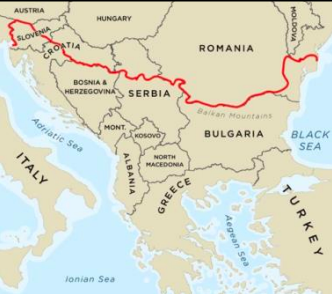
ORANGE IS THE OLD WHITE
Orange wine, Crime and Punishment
Book of Bertil 18.01
Genesis
This wonderful color called "Saffron" has been associated in human history with good and evil. Like Janus, this orange wine can represent the past, the future, the door to cross, the transition, time, duality. This brightly colored chromatic field takes its place on the chromatic circle between yellow and red. Recognized as a warm color, it is considered to have a stimulating and provocative faith, an image of joy, wealth, glory, and love. Yet until the sixteenth century the ancient languages assimilate it to variations of yellow or red., and therefore this color, although important in history by its meaning, cannot have any archaic symbolic association. This color closely associated with warmth, has in its religious symbolism of Christian dogma, such as golden yellow as the revelation divan love. Among the ancient Greeks and Romans, Bacchus-Dionysus (God of wine and drunkenness) are represented in a saffron (orange) toga. In ancient Rome it represents the symbol of inseparable marriage. In the Buddhist religion, it represents the passage, the transition. Buddha left social life by covering his body with a simple "saffron" sheet taken from the body of a dead man to return in all simplistic renunciation. It also represents human contact, communication, sharing and altruism. Yet this color will also be associated with evil. Christianity depicts Judas, the devil, and the harlot (Mary Magdalene) with orange-red hair. This color also evokes lying, adultery, betrayal. Orange and the color used to warn of danger, it is also the color of impurity and thus it became the color of public punishment in the West. Prisoners must wear the color orange in public spaces of society.

So, what do you expect when this color is that of a wine?
CHOOSE YOUR VERSION
A - The long version: For the curious and courageous. Go to "The Past" paragraph.
B - The short version: For slackers. Go to the end of this document.
CHAPTER 1.0
A 18.01.01 The past
The History of Orange Wine
To understand the distant past and the origins of more than 6000 years of this wine, I must first give you a small, simplified chemistry course (including a brief course in world history) The origin of the domestic vine and all the traditional grape varieties, come from the wild vine. Existing and very widespread from the Caspian Sea to the Atlantic, in Europe and the Mediterranean region, but it will be partly decimated in the Quaternary during the glaciation period. Some of the surviving vines have taken refuge in the "glacial refuge" of the Caucasus region (but perhaps also elsewhere - refuge of the Iberian, Italian and Balkan peninsulas). This wild vine, Vitis Lambrusque will give fruit in other to the Vitis lambrusca and the famous Vitis Vinifera. It is therefore clear that the production of fermented beverages dates to the Paleolithic (3.3 million years ago), but that the oldest archaeological traces of the intensive exploitation of the vine by human date from 5500 BC. Traces collected in the northwestern region of present-day Iran, but also throughout the region of Georgia. It is therefore true to say that the first wines (modern and orange) of grape fermentation are of Caucasian origin (Georgian), but that its existence appears on all the Iberian and Mediterranean part very quickly in the history of wine.

18.01.02 The grape has its creation
Like everyone in nature, the grapes according to their origins, their crossings by natural pollination of flowers, their geographical climates, attitude, sunshine, and soils (mineral compounds), will be (and often on the same vine) of different colors. Grapes in general (and Vitis Vinifera in particular) consist of complex and diverse chemical molecules. The most interesting for us today to understand the creation of an orange color wine (saffron-amber) are phenols and polyphenols. Their chemical compounds will affect the color, taste, and mouthfeel of the wine. In the group of flavonoids, we will find Flavonols, Anthocyanins and tannins. These three compounds during the period of vinification and aging will produce significant chemical reactions. Their interrelations are inseparable to produce a balanced wine (balance of acid, sugar, alcohol, and astringency (tonicity)).
18.01.03 Little Lexicon Vinus
Flavonoids:
These are phenols derived from the stalks of cluster, skin, and pips.
The Flavoles:
These are yellow pigments present in the skin of white grapes, they give the wine its yellow color after maceration during fermentation. The more the grape is exposed to light/sunlight, the more flavoles (and anthocyanins) the grapes will produce.

Anthocyanins:
Anthocyanins are phenolic compounds found throughout the plant kingdom. They are responsible for the blue color of flowers, fruits, and leaves. In red grapes they develop during veraison and transform the color of the green grape to blue and then black. These anthocyanins are lodged in the skin of the grape (which leaves the inner pulp of white color, except for dying grape varieties)
Sugar:
The more vegetable sugar increases during the ripening of the grapes, the more the appearance of flavoles, and or anthocyanins will be important in the fruit.
The results of a 2019 research:
International scientific research has shown that anthocyanins can be colorless and that the so-called 'white variety' grape carries some of its phenols in their skins.The variation in color in red wine comes partly from the ionization of anthocyanin pigments caused by the acidity of the wine. In this case, the three types of anthocyanin pigments are red, blue, and colorless with the concentration of these different pigments that dictate the color of the wine. A wine with a low pH (and higher acidity) will have a greater presence of ionized anthocyanins, which increases the amount of bright red pigments. Wines with a higher pH will have a higher concentration of blue and colorless pigments. As the wine ages, anthocyanins react with other acids and compounds in the wines such as tannins, pyruvic acid and ethanal, causing the wine to change and develop more "brick red" hues.

And finally, the famous Tannins:
Tannins are found in the skin, stems and seeds of wine grapes, (but can also be introduced into wine using oak barrels and shavings or by adding tannin powder). The natural tannins present in grapes are known as pro-anthocyanidins because of their ability to release red anthocyanin pigments when heated in an acidic solution (natural fermentation of musts). Grape extracts are mainly rich in monomers and small oligomers. Tannins are formed by enzymes during the metabolic processes of the vine. The number of tannins naturally present in the grapes varies depending on the variety of the grape variety. The reaction of tannins and anthocyanins with catechins, a phenolic compound, creates another class of tannins called pigmented tannins that influence the color of red wine. Tannins derived from oak are called "hydrolysable tannins" and are created from acids present in the wood. While tannins develop no flavor in the mouth and no aroma on the nose when tasting, they can be perceived by the sensation of dryness and bitterness that they can leave in the mouth.

18.01.04 But then is this orange wine the result of a magic of modern chemistry?
No, because orange wine (Saffron-amber) is probably the oldest natural wine. Its color comes from the natural chemical reaction of the fermentation of the "white" grape on its skins, as the entire lexicon precedes there explains.
In short
A vine of the family of white grape varieties that has in its genetic fingerprint DNA has traces of red grape varieties, will produce a slight coloration of the gray to amber grape (such as Muscat) with prolonged exposure to light and sun. In addition, if this grape has a high pH, the primary colorless anthocyanins of the grape will bear traces of blue color. If the grape carries a significant production of natural sugar, the skin of the grape will quickly change from green to deep yellow. So, during the fermentation and maceration of the skins with the natural tannins of the grape: Yellow + Blue + tannins = Orange (the intensity of the color will depend on the particular volume of each of its atoms / molecules). It is therefore clear that the winemaking practices pre-industrial revolution (late 18th) produced amber and orange wines called "white wine". And it is only the new demand for finer, less tannic wines, which has transformed the winemaking process by eliminating contact with the skins for white grapes during fermentation and has therefore caused an elimination of colorless tannins and anthocyanins and a low dose of flavoles in grape juice, which will leave it a color of green to yellow and very low PH (High acidity). Even though the practice of orange wine almost completely disappeared after the First World War, some regions such as Friuli. Emilia, Veneto and Liguria in Italy, or Alsace, Jura in france, and the Balkan countries, continued to produce them very marginally.

18.01.05 The question:
But then why are they so popular, and they are found today in all the wine regions (or almost) of the world ?
The answer: This is due to a perfect nuclear reaction.
The fall of the Soviet Union gave the former countries of the USSR the chance to access the free world market and to market their products. In particular Georgia, which had never changed its rural methods of wine production, for reasons of lack of resources, a financial impossibility to adapt to new technologies, and its geographical distance from access to a sea open to the world, this country will continue to produce so-called "old-style" wines. Its marginality of production and its style considered outdated will be until the 2000s a simple curiosity in the world of sommeliers and oenophiles.

The opening to globalization of trade, the intensification of the industrial mass-production of food, the dismantling of circular economy concepts, and the first warnings in the 90s of the future ecological disaster gave birth (or reborn, since the "Natural" movement dates from the beginning of the 20th century) Slow Food, Slow Wine, and Farm to table philosophies.
The millennial generation wants to be very introspective, demanding a new way of living and consuming. Demanding proof of the origin of what they consume, they are in great demand for instant experiences and differences. Having become independent adults and consumers in the early 2000s, their influences and strengths, through numbers, to partially change all social and consumer norms imperiously claim the philosophies of Generation X. This is the renaissance of "rural" wines, with an explosion of the Row Wine and Natural Wine movement.
All these elements put together are the effects of the very atomic "Agent Orange."

CHAPTER 2.0
18.02.01 The two faces of the Janus with fiery hair
The Property
The past, the future, the door to cross, the transition, the time, the duality, the image of joy, wealth, glory, and love.
As with white wines and red wines, there are a thousand and one possible nuances for orange wines. The choice of one or more grape varieties, the maceration time, the specificity of the original soils, and the container used; amphora, wooden barrel, concrete or stainless steel, will be the main factors of the personality of the wine. These orange wines give, most of the time, structured wines, with aromas of candied fruit and spices, with a palette of the citrus family ranging from clementine, mandarin, orange, kumquat, and the whole family of grapefruits. These are wines with character, and a very wide and varied aromatic expression. These are wines with powerful flavors, persistent on the nose and in the mouth. The presence of tannins, which will manifest themselves by a tactile sensation more or less drying, creates rather dry veins, with great freshness, and an assertive structure. It will be necessary to appreciate all the charm, to be serve at a temperature that is between that of a white and that of a red around 55f. Served too cold would harden the tannins and deprive you of their extraordinary aromatic palette. Too hot, it would flatten the wine and make them linear. Very digestible, dry, and less acidic than "classic" white wines. In general, it alcohol will be very little marked, so it will remain quite fresh and complex. The tannins in wine are powerful antioxidants, so there is no fear of passing them in a carafe to aerate them. They are easy to pair with saffron, curie, Asian cuisine, and dried fruit cuisine, currants, apricot, date, peach, and orange fruits. But also, with strong cheeses with dry crust develop aromas of nuts and hazelnuts will be admirable pairings. White meat, fish, seafood, or vegetarian cuisine, all are allowed.
18.02.02 EVIL
Judas, the devil, lies, adultery, betrayal, anid impurity. Let's be fair because Orange isn't always the new Chic.
Orange wine and "Natural Wine" are not always to be put in the same basket. Because orange wine is a winemaking technique, as for "Natural" it is a philosophy, a vision, a method not very well defined in its approach, and far too free in its practice to accept unconditionally my approval. As with all wines, great knowledge and mastery is the key to the quality of its wines. The winemaker must be like a conductor, conducting while letting play. If this is not mastered, your new curiosity for orange wines may be a great disappointment and even a slight poisoning. Take the time to choose your wine and your winemaker, and if all faith the wine immediately communicated to your aromas of; white or chemical glue, nail polish or solvent (Acetone), old wet paper, damp and poorly ventilated cellar, rotten egg, septic tank, burned tire or heavy acid vinegar aromas. Do not consume, reject it immediately. Because wine is a pleasure and especially not a torture or an act of sadism.
Do not be fooled by the attraction of its color, poorly thought out, it can lead you to oenophile adultery, and that Dionysus protects you from sinning carnal.
B 18.01.01 b is FOR THE SLACKERS
Orange wine is the result of white grapes vinified with the process applied to red wines.
Mr. B
*Memorandum: My words and opinions in these newsletters are and would always be personal, and I intend to offend. I always accept that others have the full right and duty to challenge me, to argue, and, if it is necessary, excommunicate me from their beliefs (often dull and hollow) because I would act the same way if it were the other way around.










